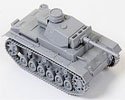The First World War - Battle Of Mons
World War One 1914 - 1918
World War One began on July 28, 1914. The War was initially a European conflict and was known as The Great War. Later, after the war had escalated to a global conflict, it became known as the World War and after war broke out again in 1939 it became known as World War One or the First World War.
The war started when Austria-Hungary invaded Serbia after Gavrilo Princip assassinated Archduke Franz Ferdinand, heir to the Austrian throne, in Sarajevo on June 28 1914. The Austrians presented Serbia with an ultimatum that insisted they be allowed to conduct investigations into the assassination. The Serbians accepted most of the demands but felt that some infringed on Serbian law. Austria-Hungary had been looking for an excuse and invaded Serbia.
Serbia was under the protection of Russia and Germany was allied to Austria-Hungary; so Germany declared war on Russia in support of Austria. Russia was an ally of France so Germany declared war on France automatically. Germany attacked France through Belgium, following a pre-arranged plan called the Schlieffen Plan, and forced the British into war because Britain had assured Belgium of support should they be invaded by Germany. Italy should have joined the Central Powers of Germany and Austria-Hungary but chose instead to join the Entente Powers of Britain, France and Russia. All this happened relatively quickly according to pre-war plans made by the member powers of the Triple Alliance and Triple Entente. What started as a simple act of imperialism on the part of Austria-Hungary rapidly escalated into a major European war and ultimately into a global conflict when Japan, Turkey and the USA, amongst others, were drawn into the war later.
The war lasted over four years and ended in November 1918. On the 11th hour of the 11th day of the 11th month of 1918 hostilities were concluded when the Allies and Germany agreed to an Armistice. The formal end of the war was with the signing of the Treaty of Versailles on June 28 1919. The other nations involved had come to terms earlier and made separate agreements.
The Suffragettes were an influential group that
fought for the right
for women to vote.
Protect your
mobile with this softcase
The period after the war saw significant social and economic reform across the globe. One of the most momentous changes was that of Universal Suffrage in Britain and Germany, where the right to vote became open to any subject regardless of race, sex, wealth, belief or social status; for the first time women had the right to vote. Another powerful global change was the Russian Revolution where communist government, led by a political party, replaced the older Tsarist empire. An attempt to avoid a repeat of the war was made.
The League of Nations was established, a global assembly headed by the foremost economic powers of the world. Various treaties were negotiated that were designed to avoid an arms race.











